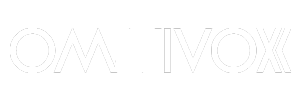Control room with a high flexibility
The overall idea for the whole studio is to keep a flexible approach. To make it possible for you to work in any way you feel comfortable with.
The control room is built according to the live end/dead end principle. The room has a comfortable size. It also has the legendary Urei 813 wall mounted speakers as well as a pair of Genelec 1030As, Auratones and a Bluetooth speaker. It’s actually a great place to enjoy music. And you will find it’s also a nice place to track and mix.
The control room is also booked by artists and composers who work mainy in the box, with hip-hop, film scoring etcetera. We also have customers who produce audio books, advertising and so forth.
Gear:
Mixing console: AMEK TAC Magnum, 26 channels. Beautiful analog mixer from 1991. Recapped and upgraded with Langley preamps in 2022.
Monitors: Wallmounted Urei 813, Genelec 1032, Auratones.
Tape machines: 2″ 24 track Otari MX80 for tracking, 1/4″ Studer A807 for mix.
Computer: MacPro, 48Gb RAM, 8‑core processor, 2 TB HD.
DAW: LogicPro X
Outboard: UAD LA-610, Tube-Tech LCA-2B, Stocktronics RX4000 plate reverb, Roland RE-501, Eventide H910, Ashly SC-50, Lexicon PCM 70 and more. Outboard is accessed via the mixing consoles’ bantam patchbay.
Microphones: Ehrlund handbuilt tube microphones, Ehrlund Ehr, ‑D, ‑E and T microphones, Beyerdynamics and GA ribbon mics, Shure SM7, SM 57s, Sennheiser, Rode etc.
Listening: Hearback system with 5 personal mixers.

The studios Otari MX80 was owned by great producer Douglas Carr and used for recordings with Swedish artists such as Meja, Ace of Base, Leila K and Army of Lovers.
Recording techniques
Analog recording
You can record to tape at Omnivox. Actually you can also borrow tape from us to do so. So you won’t have to buy your tape reels at €489 per 30 min tape.
Recording to tape differs from recording to a computer in many ways. The recorded sound is affected by how hard you hit the tape, the tape formula and recording speed. There are 24 tracks only and also the preparations before you can actually record are more time consuming.
Why analog?
So why go through all the extra work and also have the limitations in tracks?
1. Sometimes limitations can be a good thing, for a start. In the analog domain is not an open field with thousands of possibilities. You have got your 24 tracks, and that is that.
2. There’s also the fact that you need to rely on your ears througout the recording. There’s no computer screen verifying lack of timing or too-hot signals.
3. Last but not least many people dig the analog sound. Better or worse is hard to tell, but surely a bit different.
Differences
The analog recording process differs greatly from the digital one. Analog recording is a bit like performing without a safety net. In the digital domain it’s easy to edit anything and to undo decisions. In analog it’s quite the opposite. Which makes everybody, musicians included, more alert. When recording analog it is more important making a really great take, simply because it’s always a risky business making punch-ins and to edit the tape by splicing.
The MX-80 at Omnivox is a 24-track. If you decide to work purely in analog, thats the number of channels you have got. But many great albums have been recorded with less!
Fewer channels means you have to take more immediate decisions. consider track-space, and think about whether you really have room for 12 mics on the drums alone.
Preparations
Preparations for analog recording are more extensive than digital recording. The tape machine is demagnetized and cleaned several times during a day of recording. The 2″ tapes are erased and depending on formula also baked.
Please note:
If you want to save your tape-recordings in physical form you must bring your own tapes. Please contact us well in advance for a discussion.
The 2″ machine at Omnivox is set up for recording with 499-tapes.
The 1/4″ machine is set up for 900-tapes.
Hybrid technique — the best of two worlds?
Track to tape, then digitize
We often like to track live to tape, digitize and continue working in the digital domain. It’s a hybrid technique, where you get the best out of the analog domain along withe the ease and the possibilities of the digital.
Ready to Check Availability and Plan Your Recording Session? Let’s talk!
Simply fill out and submit the contact form, and we’ll get back to you shortly.
We look forward to hearing from you!

